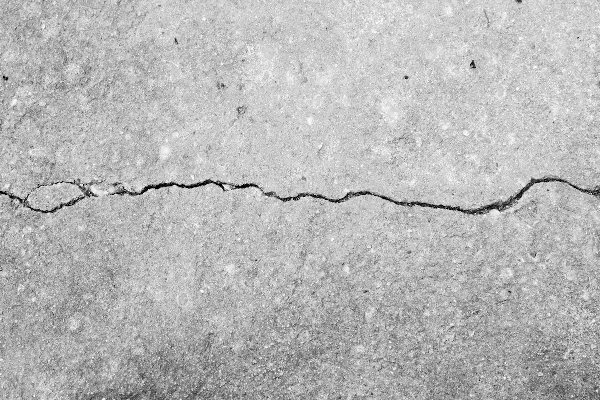Shrinkage is caused by decrease in either concrete length or volume resulting from changes in moisture content or chemical changes. The need to facilitate placement and consolidation of concrete often results in the decision to use a greater amount of mixing water than is needed for the hydration process. The used water content creates movement and generates tensile stresses that pull the cement paste closer causing shrinkage. Concrete shrinkage can lead to cracking, curling of slabs, and dimensional instability of concrete members.
Causes of concrete shrinkage
The are many causes for concrete shrinkage, they can be listed as;
- High cementitious materials content
- Water evaporation
- Addition of excessive water in concrete
- Contraction of the hydration products
- The surface-area-to-volume ratio of concrete
- Environmental factors
- Low water-cement ratio
- Cement hydration
- High air temperature
- Low humidity
- Instability of concrete drying
- Type of Coarse Aggregates
- Shape of Aggregates
- Moisture Movement in Concrete
Different types of concrete shrinkage and their preventions
Plastic shrinkage
Plastic shrinkage develops on the surface of the fresh concrete. It is a consequence of water evaporation from the surface of fresh concrete or absorption in the concrete form or bedding. It is a contraction in volume due to water movement from the concrete while still in the plastic state, or before it sets. This movement of water can be during the hydration process or from the environmental conditions leading to evaporation of water that resides on the surface on the wet concrete. So, the more the concrete bleeds, the greater the plastic shrinkage should be. It is proportional to cement content and, therefore, inversely proportional to the w/c ratio [weights of water and cement used in the concrete mix].

Prevention of plastic shrinkage
- Preventing the rapid loss of water from the surface.
- The surface covering with the help of polyethylene sheeting
- Proper vibration of the concrete
- Use of expansive cement or shrinkage compensating cement
- Use of aluminum powder
- Reducing the temperature of a concrete mixture
- The use of micro-synthetic fibers
- The use of an evaporation reducer
Drying shrinkage
Most of the building materials having pores in their structure in the form of intermolecular space, expand on absorbing moisture from the atmosphere and shrink on drying. These movements are reversible, causing cracks in buildings in the form of Drying shrinkage. Drying shrinkage occurs when water starts evaporating from the exposed surface and the moisture differential along the depth of the slab causes strain which induces tensile stresses.

Prevention of drying shrinkage
- Using a concrete with a lower water content
- Selection quality ingredients for the concrete mix
- Maintaining the water /cement ratio of the concrete mix
- Reduction of cement paste volume
- Good curing
- Providing movement joints and sufficient crack control reinforcement.
Autogenous shrinkage
Autogenous shrinkage occurs after the initial setting of concrete due to hydration, since this process requires water and therefore reduces the internal free water. It is caused because of a self-desiccation process in the pores of cement stone, it is the use of water in the cement hydration processes. The process of self-desiccation begins in these pores because of the process of hydration i.e. inside the cement stone structure all water is used for hydration and humidity cannot reach fast enough from the outside due to density structure.

Prevention of autogenous shrinkage
- Leveling the cement content in the mix
- The use of low-heat cement
- Use of shrinkage-reducing admixture
- Application steel fibers and polypropylene fibers
- Addition of pre-soaked lightweight aggregate
Carbonation shrinkage
Carbonation shrinkage occurs in hardened concrete. CO2 (carbon dioxide) from the environment on cement stone causes chemical reactions. This leads to the formation of calcium carbonate and water and, consequently, a reduction in volume. It is observed in areas that have intermediate humidity conditions.

Prevention of carbonation shrinkage
- Suitable joints can be provided in the structure during its casting
- Providing regular contraction joints in the concrete
- Use of higher the modulus of the aggregate
- Use of lower cement content
Chemical and Thermal shrinkage
Other than four pivotal shrinkage types, two other types of shrinkage occur viz. chemical and thermal shrinkage.

Chemical shrinkage occurs due to a decrease of volume cement paste occurring due to the chemical binding of water in the process of cement hydration. Thermal shrinkage is caused by the contraction of the movement of concrete. Seasonal variation of temperature could lead to cracking of concrete that can cause as a result of the thermal contraction in the concrete. These types of shrinkages can be prevented by controlled by the use of shrinkage compensating admixture and reducing agents.
The different types of concrete shrinkage and their prevention methods are discussed above. There are some general tips that need to be followed for all shrinkage types.

Conclusion
The causes, types and prevention methods of concrete shrinkage are discussed above. The appropriate mix design water-cement ratio is critical to reducing the potential for concrete shrinkage. Take into consideration that ambient conditions will affect the concrete such as high heat and low humidity. Take the help of experts in concrete placement, who can assist in creating a checklist to help reduce the chances of cracking on your project.

